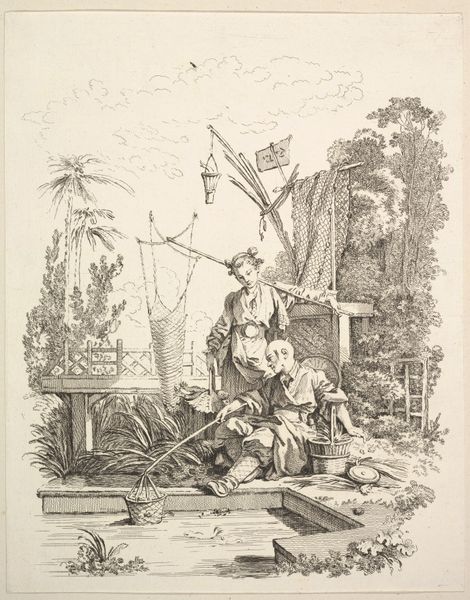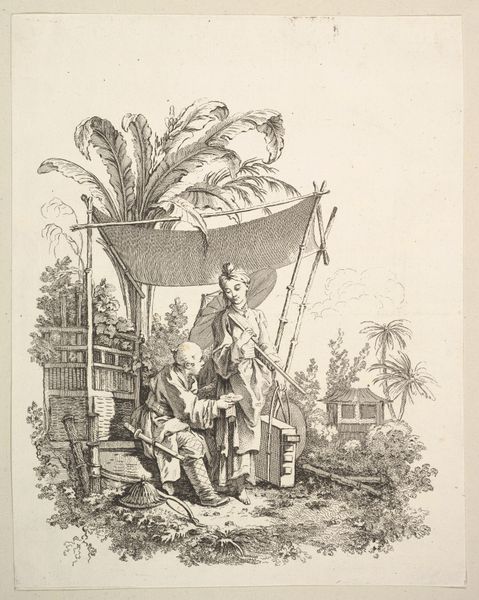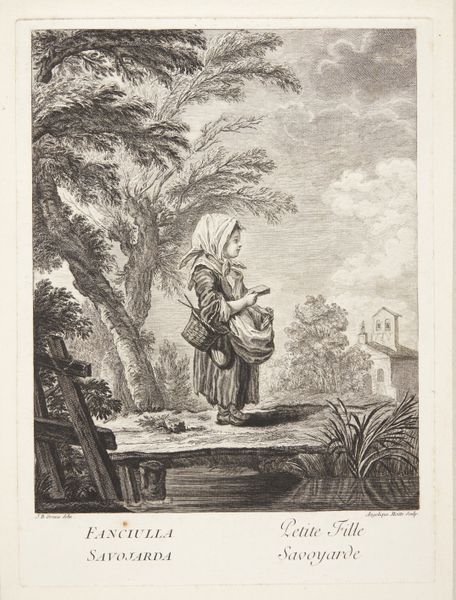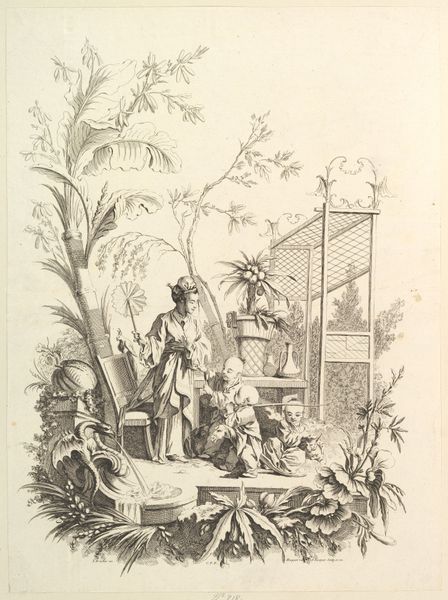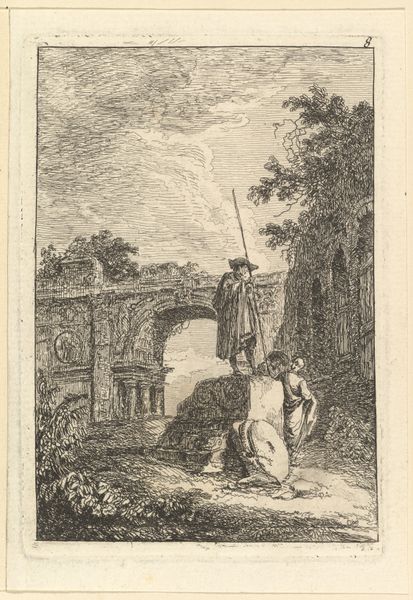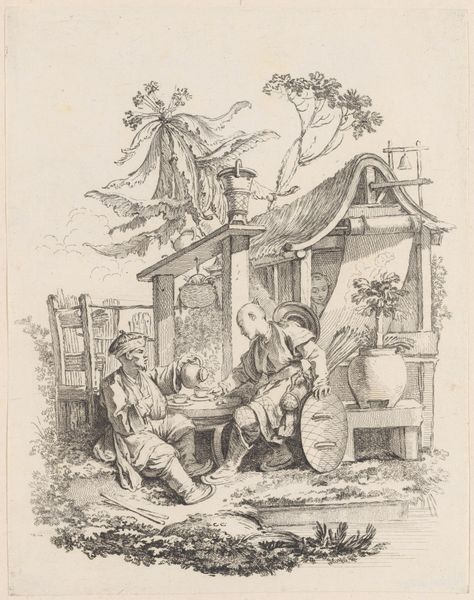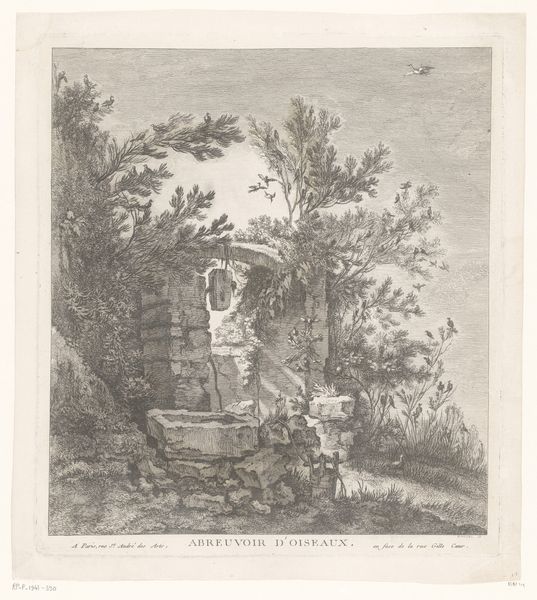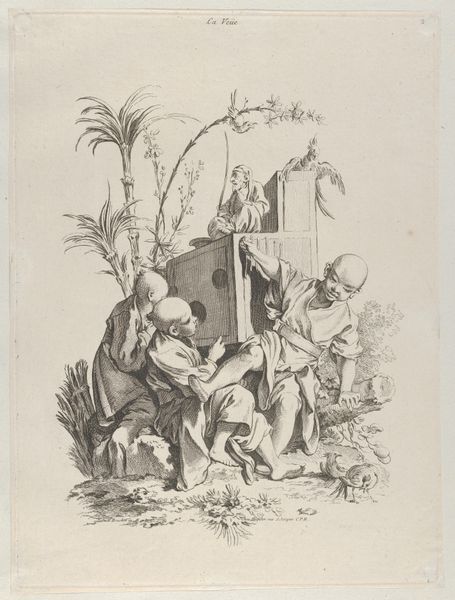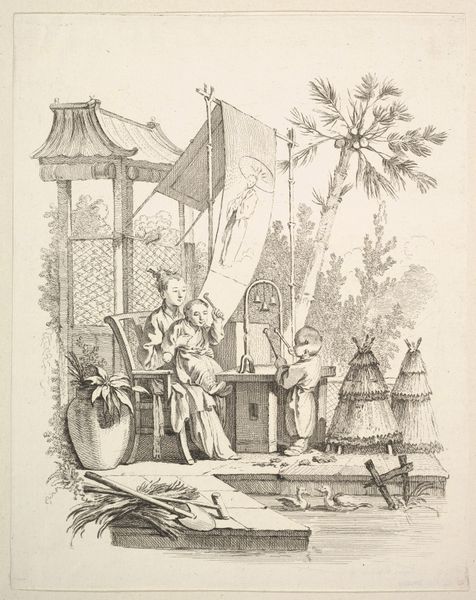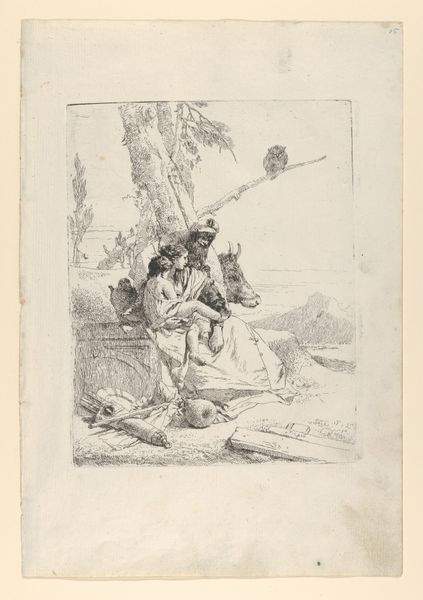
Two Women Leading a Child toward a Teapot on a Table near a Pond 1737 - 1747
0:00
0:00
drawing, print, engraving
#
drawing
# print
#
figuration
#
child
#
orientalism
#
15_18th-century
#
genre-painting
#
engraving
#
rococo
Dimensions: Sheet (trimmed): 11 13/16 × 9 5/16 in. (30 × 23.7 cm)
Copyright: Public Domain
Editor: This is Gabriel Huquier’s "Two Women Leading a Child toward a Teapot on a Table near a Pond," dating to somewhere between 1737 and 1747. It's a delicate engraving, and I'm struck by how it presents this sort of idyllic scene, yet feels filtered through a distinctly European lens. What do you see in this piece? Curator: The engraving reverberates with the fashion for chinoiserie that gripped Europe in the 18th century. Beyond its surface appeal, though, it’s about the *idea* of China, a romanticized, imagined place. The image carries the weight of cultural appropriation. Editor: Appropriation? Curator: Note the specific choice of objects: the teapot, the clothing, and the exoticized flora. These weren't necessarily accurate representations of Chinese life, but symbols carefully selected to create a visual shorthand for "the Orient" for a European audience. Editor: So, it's not just a simple depiction of a family scene? Curator: Far from it. Ask yourself, what emotional responses do these symbols evoke, and what is the implication when Westerners extract them from their original context to apply them in unrelated settings and aesthetics? Editor: It makes me consider the power dynamics inherent in representation. The people become motifs. The picture is not about cultural exchange; it's a co-option. Curator: Precisely! It's about Europe defining itself *through* its imagined "Other." Now, does the experience change how you view the artwork? Editor: Absolutely! What at first seemed charming and picturesque now sparks much more thoughtful discussion about cultural perceptions and the stories we tell ourselves. Curator: That’s the beauty of delving into the symbolism; images become portals to understanding broader historical and cultural narratives.
Comments
No comments
Be the first to comment and join the conversation on the ultimate creative platform.
